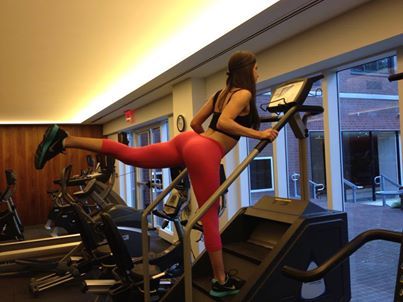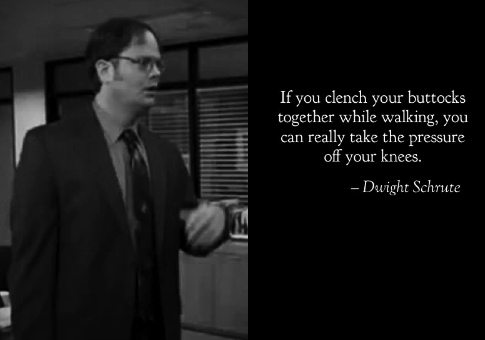Much Smarter & Effective Glute Exercises
2020-02-27

Jessica Bento, Physical Therapist
I’m not going to lie, when Josh first asked me to contribute more to our DVRT blogs I wasn’t so in favor of it. Writing was never really my thing and as some of you know, being in front of large groups isn’t my favorite either. However, seeing how positive so many of you have been about learning, THAT has really motivated me to come up with some great information to share with you. Especially because I never look at fitness just through the prism of building muscle or weight loss. Trust me, those are goals I can relate with and understand, however, wouldn’t it be really cool if we could accomplish those WHILE helping people move better and have less aches and pains? They only way we can accomplish this goal is if we understand that not all exercises are the same, especially when it comes to glute exercises!
Glute Exercises In 2020
If I go on my social media today and look up something like “glute exercises” I will see a whole bunch of “interesting” training. Lots of kicking, bands, and things that look NOTHING like what our body was actually designed to do in life! I get it, people value what they can feel and if we isolate a muscle we definitely can feel it. However, that doesn’t actually lead to us achieving our fitness goals like we may think!

Josh shared this great quote by world renown spine specialist, Dr. Stuart McGill, in one of his recent posts…
“single muscles cannot be activated to 100% MVC in these whole-body standing exercises that do not isolate joints. This is because most torso muscles create moments about the 3 orthopedic axes of the spine. If a muscle were activated to a higher level, unwanted moments would occur that would have to be balanced by other muscles. This places a constraint on the activation level of any muscle in a “functional exercise”…The 3-dimensional joint moment constraints hold the peak muscle activity levels in check during the whole-body multiplanar exercises.”
At first glance, if we break down what Dr. McGill has said it looks like functional training isn’t great for glute exercises that want to develop the glutes right? After all, if we can’t achieve these HUGE EMG readings (how muscle activity is measured and far from a 100% trustworthy method) from functional training why would we use it to develop our muscles?
Our body is designed to function in balance, if one muscle gets SUPER active then you have to wonder what the surrounding structures and those muscles that are suppose to work with said muscle are doing. Don’t confuse though if a muscle doesn’t have off the chart activity that you aren’t building the muscle or that it isn’t getting well trained. Let me show you three ways of constructing better glute exercises.
Your Glutes Start On The Ground
No, I’m not necessarily talking about hip bridging all day. Rather, I am referring to the fact that your FEET actually drive your glutes. Think about walking around, you wouldn’t all of a sudden start squeezing your glutes. However, if you think about grabbing the ground and pushing off with your feet as you move, your glutes become more active. It wouldn’t make a lot of sense from a movement perspective if randomly squeezing our glutes caused them to be more productive. Our body functions largely from the ground up and that is really important to know how to properly cue and progress our glute exercises.

Don’t listen to Dwight Schrute about functional anatomy!
Knowing how to cue the glutes properly is what helps us get better results from our training.
One of the EASIEST ways to get more from your glute exercises is to force your feet to work harder to create stability on the ground. Working towards more single leg drills like the above hip bridges will go MUCH further in getting results than just trying to go heavier. That has a lot to do with the fact your glutes are muscles that are designed to create force, but are also postural muscles and do A LOT to resist movement so your pelvis can be a stable platform for the body to move!
Of course going to single leg exercises can seem taunting for a lot of people, so that is why we have some progressions like those DVRT drills I show above, as well as…
These types of drills that teach the glutes to work as they are designed versus being artificially supported by something like a landmine. When Josh shared this earlier this week is was so important for us to have people understand that learning to control your OWN body in space is not only important in having better strength gains, but teaches these muscles to work as they are suppose to in life.
The Lat Connection
Probably the most surprising idea we share in all of DVRT has to do with how we look at glute exercises like hip bridges differently than most. The irony is that what we coach is what people use on EVERY other glute exercises EXCEPT they don’t apply this important concept to their hip bridges.
That is the lats play a HUGE role in getting the glutes to work correctly in the Posterior Oblique Sling system (POS). This system helps stabilize our spine and SI joint as we walk, run, etc. This quote from physio-pedia describes the importance of the POS well, ” The POS, otherwise known as the back functional line, crosses approximately at the level of the sacro-lumbar junction. The lower portion of the sling, consisting of the distal GM fibres, passes underneath the iliotibial tract to attach to the posterolateral edge of the femur, thus this system becomes linked with the lateral sling[16]. Within recent decades’ clinicians have begun to identify that stability is a complex phenomenon, and “a system of assisting movement whilst stabilising” exists[17]. The POS is fundamental to this method of functioning.”
This demo by DVRT Master, Cory Cripe really brings this concept to life.
If you think this seems weird that we would recommend doing glute exercises like hip bridges like you see below rather than the weight on the hips, let me remind you…
-On barbell deadlifts the first action is to try to “break the bar” to bring in the lats.
-When one goes to do a kettlebell swing, the first thing is to try to “break the handle” to bring in the lats.
So, it makes sense to do these actions on most other glute exercises but NOT hip bridges? That doesn’t seem right does it?
This doesn’t only get missed during glute exercises like hip bridges. In the drills below people forget to squeeze the handles of the kettlebells, pull apart the Ultimate Sandbag, drive the elbows to the ribs, etc. These are all essential in building the connections and strength we could achieve from these glute exercises.
When we get to more challenging environments like being truly single leg, trying to put these concepts of engaging the feet, optimizing the lats, all lead to us having more success in drills the most struggle to implement. It isn’t just that we can use these drills, but these types of glute exercises make our training so much more productive. Single leg deadlifts are a great example of these ideas coming together and how we can use progressions within the exercise. For example, the single leg deadlift with the XL Perform Better mini band helps teach how to not only use the foot on the stance leg, but how to properly drive the leg back to use glutes on both sides. We have how we are using the weight as well! Using two kettlebells is easier than one (yes, I know can be more load, but we use this balancing of the body for stability), the grip we have (don’t let the arms turn!), how we create tension on them like “pulling apart” the Ultimate Sandbag.
My hope is that gaining a deeper understanding we can provide people with more effective exercises. After all, we all want the best we can have, who wants to work hard to do the “ok” exercise? These concepts you will be surprised do NOT just relate to glute exercises. The more we use the concepts of functional training we will see how we get positive impact to our core and upper body training as well. Who doesn’t want that?!
We are in the LAST days to save 30% on our Ultimate Sandbags. Build your dynamic gym with code “save30” through Sunday HERE!
© 2024 Ultimate Sandbag Training. Site by Jennifer Web Design.






